Master the ATI Med-Surg Proctored Exam 2024 with this ultimate study guide, meticulously designed for nursing students aiming for top performance. This comprehensive resource features high-yield questions that target essential medical-surgical nursing topics, including cardiovascular, respiratory, gastrointestinal, endocrine, and neurological disorders, as well as perioperative care and emergency nursing. Each question is paired with detailed answers and thorough rationales to enhance understanding of complex concepts, while proven test-taking strategies provide practical techniques to boost confidence and optimize exam performance. Fully updated to reflect the 2024 ATI Med-Surg content outline, this guide incorporates the latest evidence-based practices and NCLEX-style questions to ensure complete preparation. Perfect for nursing students seeking to excel in their med-surg coursework and proctored exams, this guide is an essential tool for achieving academic and professional success.
Preview
1. A nurse is assessing a client who is near the end of life following a head injury. The
client has alternating periods of rapid breathing and apnea. The nurse should
document this finding as which of the following respiratory patterns?
a. Biot’s respirations – Irregular breathing with sudden periods of apnea, seen in
brainstem injury.
b. Hypoventilatory respirations – Shallow breathing due to opioid overdose, not typical in
head trauma.
c. Kussmaul respirations – Deep and rapid respirations associated with metabolic
acidosis (e.g., diabetic ketoacidosis).
d. Cheyne-Stokes respirations – Alternating patterns of rapid breathing and apnea,
common in increased intracranial pressure (ICP) and end-of-life situations. (Correct
Answer)
Rationale: Cheyne-Stokes respirations occur due to cerebral hypoxia and increased ICP,
making it the correct documentation for this finding.
2. A nurse is administering a unit of packed RBCs to a client and notes that there are
several small clots floating in the IV bag. Which of the following actions should the
nurse take?
a. Inject 5,000 units of heparin into the unit of packed RBCs – Unsafe; blood products
cannot be altered after delivery.
b. Place the unit of packed RBCs in a warming unit for 5 min – Warming is only done for
severe hypothermia or neonates, not for clots.
c. Return the unit of packed RBCs to the blood bank – Correct Answer
d. Dilute the unit of packed RBCs using 50 mL of lactated Ringer’s – Blood should only
be infused with normal saline (0.9% NaCl); LR can cause clotting.
Rationale: Presence of clots indicates improper storage or expiration. The safest action is
to return the blood unit.
3. A nurse in a provider’s office is teaching a client about the self-management of
GERD. Which of the following instructions should the nurse include?
a. “Eat a light meal 1 hour before bedtime” – Avoid eating before bedtime to prevent
reflux.
b. “Lie down for 30 minutes after each meal” – Clients with GERD should avoid lying
down immediately after eating.
c. “Increase your caloric intake by 250 calories per day” – No direct relation to GERD
management.
d. “Sleep with the head of your bed elevated 6 inches” – Correct Answer
Rationale: Elevating the head of the bed reduces reflux symptoms by keeping stomach
contents down due to gravity.
client has alternating periods of rapid breathing and apnea. The nurse should
document this finding as which of the following respiratory patterns?
a. Biot’s respirations – Irregular breathing with sudden periods of apnea, seen in
brainstem injury.
b. Hypoventilatory respirations – Shallow breathing due to opioid overdose, not typical in
head trauma.
c. Kussmaul respirations – Deep and rapid respirations associated with metabolic
acidosis (e.g., diabetic ketoacidosis).
d. Cheyne-Stokes respirations – Alternating patterns of rapid breathing and apnea,
common in increased intracranial pressure (ICP) and end-of-life situations. (Correct
Answer)
Rationale: Cheyne-Stokes respirations occur due to cerebral hypoxia and increased ICP,
making it the correct documentation for this finding.
2. A nurse is administering a unit of packed RBCs to a client and notes that there are
several small clots floating in the IV bag. Which of the following actions should the
nurse take?
a. Inject 5,000 units of heparin into the unit of packed RBCs – Unsafe; blood products
cannot be altered after delivery.
b. Place the unit of packed RBCs in a warming unit for 5 min – Warming is only done for
severe hypothermia or neonates, not for clots.
c. Return the unit of packed RBCs to the blood bank – Correct Answer
d. Dilute the unit of packed RBCs using 50 mL of lactated Ringer’s – Blood should only
be infused with normal saline (0.9% NaCl); LR can cause clotting.
Rationale: Presence of clots indicates improper storage or expiration. The safest action is
to return the blood unit.
3. A nurse in a provider’s office is teaching a client about the self-management of
GERD. Which of the following instructions should the nurse include?
a. “Eat a light meal 1 hour before bedtime” – Avoid eating before bedtime to prevent
reflux.
b. “Lie down for 30 minutes after each meal” – Clients with GERD should avoid lying
down immediately after eating.
c. “Increase your caloric intake by 250 calories per day” – No direct relation to GERD
management.
d. “Sleep with the head of your bed elevated 6 inches” – Correct Answer
Rationale: Elevating the head of the bed reduces reflux symptoms by keeping stomach
contents down due to gravity.
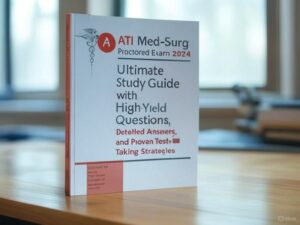
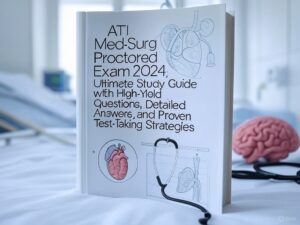



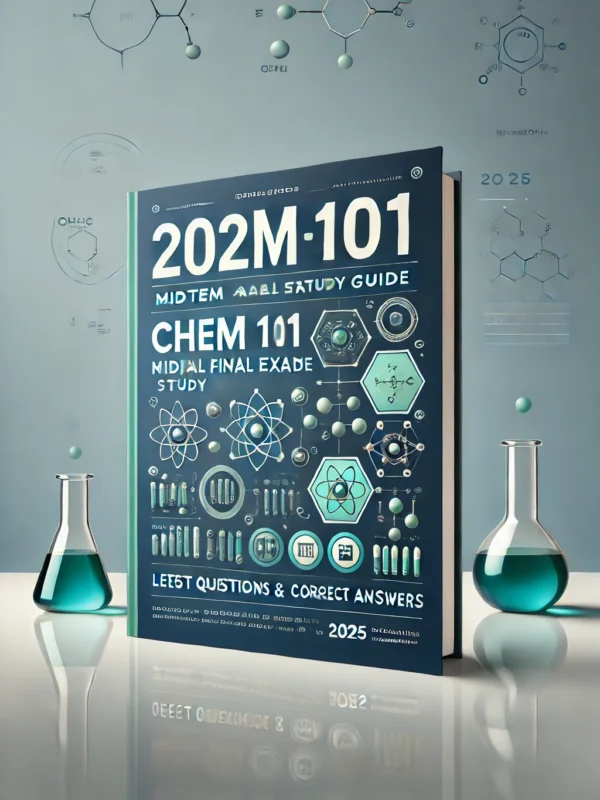
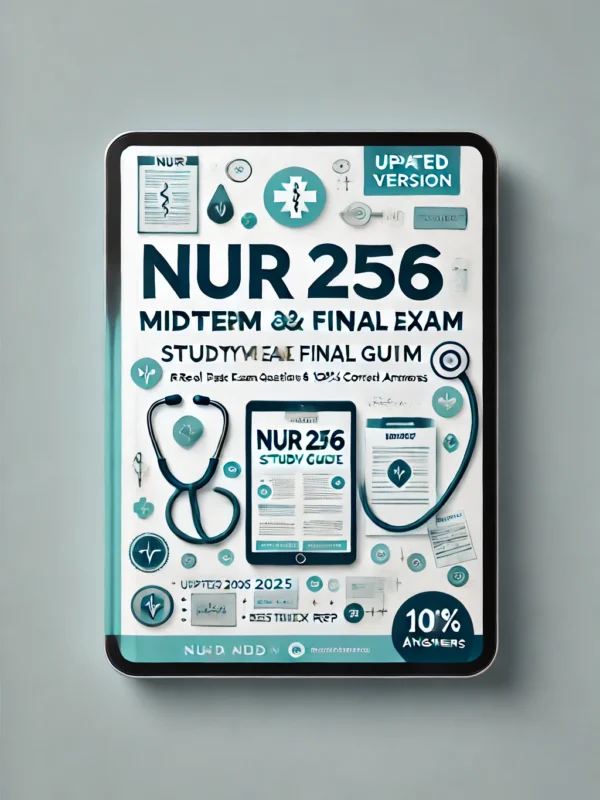
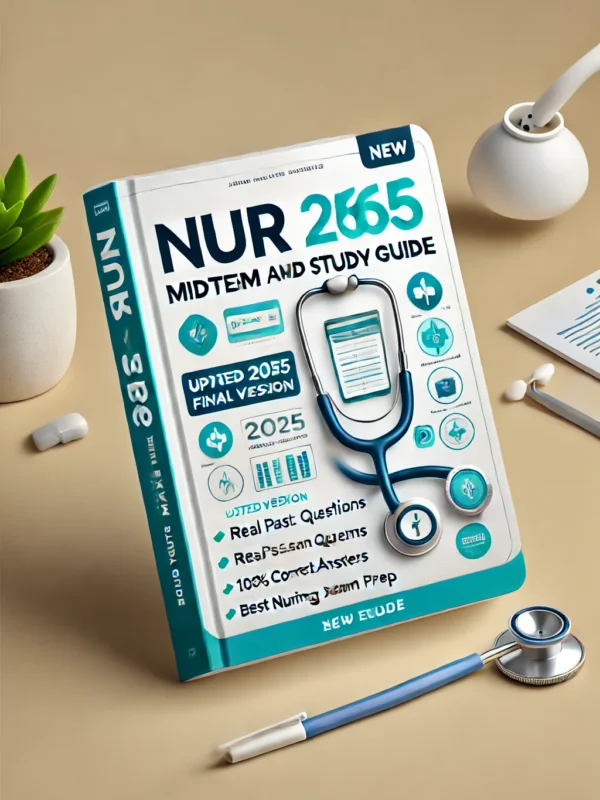
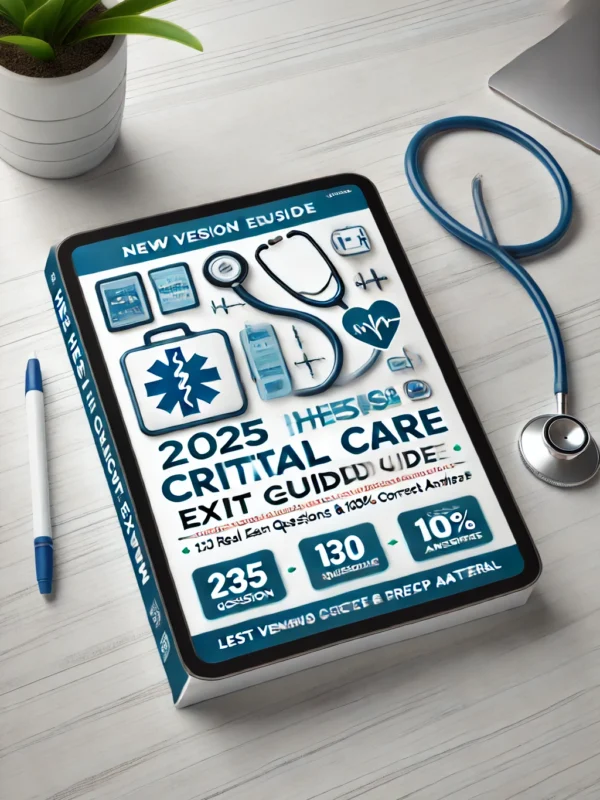
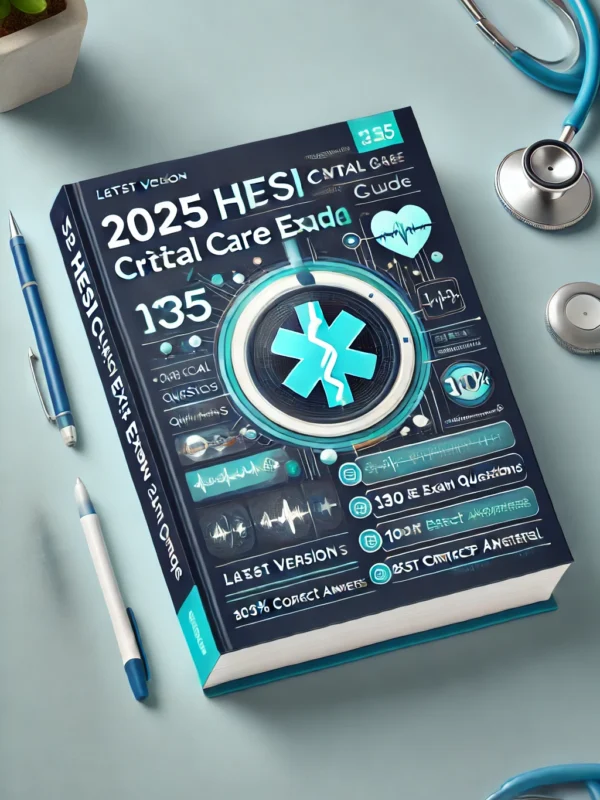


Reviews
There are no reviews yet.